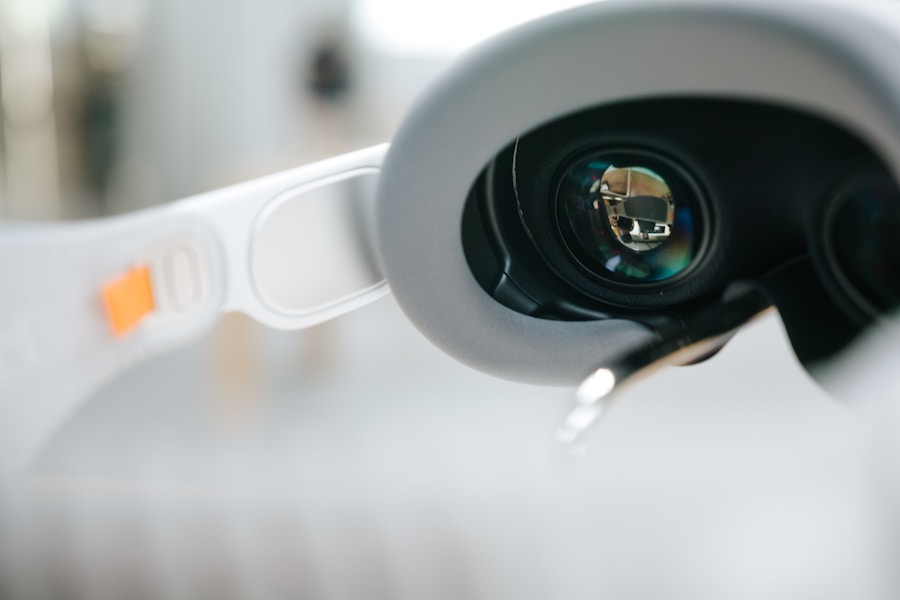Low-vision augmented-reality glasses are a revolutionary technology designed to assist individuals with visual impairments in their daily lives. These glasses use advanced computer vision and image processing algorithms to enhance the remaining vision of the wearer, providing them with a clearer and more detailed view of their surroundings. The glasses are equipped with high-definition cameras that capture the visual information in real-time and display it on the lenses, allowing the wearer to see and navigate their environment more effectively.
The glasses also come with a range of features such as magnification, contrast enhancement, and text-to-speech capabilities, which further aid individuals with low vision in performing various tasks. By providing real-time visual assistance and support, low-vision augmented-reality glasses empower users to overcome the challenges associated with their visual impairment and lead more independent and fulfilling lives.
Improving Independence and Mobility for Residents
One of the key benefits of low-vision augmented-reality glasses is the improvement in independence and mobility for residents with visual impairments. These glasses enable users to navigate unfamiliar environments with greater confidence and ease, as they can access real-time visual information about their surroundings. This allows them to move around independently, without having to rely on assistance from others.
Furthermore, the glasses provide users with enhanced depth perception and object recognition, making it easier for them to avoid obstacles and hazards in their path. This not only promotes greater independence but also reduces the risk of accidents and falls, thereby improving the overall safety and well-being of residents. With the help of low-vision augmented-reality glasses, individuals with visual impairments can enjoy a greater sense of freedom and autonomy in their daily lives.
Enhancing Social Interaction and Communication
Low-vision augmented-reality glasses also play a crucial role in enhancing social interaction and communication for individuals with visual impairments. By providing users with improved visual acuity and facial recognition capabilities, these glasses enable them to engage more effectively in social interactions and connect with others. This can have a significant impact on their overall well-being and quality of life.
The glasses also come with features such as voice control and audio feedback, which allow users to communicate more easily with others. This not only facilitates better communication but also helps individuals with visual impairments to participate more actively in social activities and events. By enhancing social interaction and communication, low-vision augmented-reality glasses contribute to a more inclusive and supportive community for residents with visual impairments.
Accessing Information and Entertainment
Another important benefit of low-vision augmented-reality glasses is the ability to access information and entertainment more easily. These glasses can display text in a larger font size and provide audio descriptions of visual content, making it easier for users to read books, newspapers, and digital screens. This allows individuals with visual impairments to stay informed and entertained, without having to rely on others for assistance.
Furthermore, the glasses can also be used to access digital content such as videos, movies, and online resources, providing users with a wider range of entertainment options. This not only promotes greater independence but also allows individuals with visual impairments to enjoy a more enriching and fulfilling leisure time. By enabling easier access to information and entertainment, low-vision augmented-reality glasses empower users to lead more engaging and enjoyable lives.
Promoting Safety and Confidence in Daily Activities
Low-vision augmented-reality glasses are also instrumental in promoting safety and confidence in daily activities for individuals with visual impairments. The enhanced visual information provided by the glasses allows users to identify potential hazards and obstacles more effectively, reducing the risk of accidents and injuries. This promotes a greater sense of safety and security for residents, enabling them to carry out their daily activities with greater peace of mind.
Moreover, the improved visual acuity and object recognition capabilities of the glasses instil a greater sense of confidence in users, allowing them to tackle various tasks and challenges more independently. This not only enhances their overall well-being but also fosters a greater sense of empowerment and self-reliance. By promoting safety and confidence in daily activities, low-vision augmented-reality glasses contribute to a more inclusive and supportive environment for individuals with visual impairments.
Overcoming Barriers in Daily Living
Low-vision augmented-reality glasses are instrumental in overcoming barriers in daily living for individuals with visual impairments. These glasses provide users with the tools they need to navigate their environment more effectively, enabling them to overcome challenges such as reading small print, recognising faces, and identifying objects. This allows them to carry out various tasks more independently, without having to rely on assistance from others.
Furthermore, the glasses also help individuals with visual impairments to participate more actively in social activities, access information, and engage in leisure pursuits. This not only promotes greater independence but also fosters a greater sense of inclusion and belonging for residents. By overcoming barriers in daily living, low-vision augmented-reality glasses empower individuals with visual impairments to lead more fulfilling and meaningful lives.
The Future of Low-Vision Augmented-Reality Glasses
The future of low-vision augmented-reality glasses holds great promise for individuals with visual impairments. As technology continues to advance, these glasses are expected to become even more sophisticated and capable, providing users with an even greater level of support and assistance. This includes improvements in image processing algorithms, enhanced connectivity features, and the integration of artificial intelligence for more intuitive user experiences.
Furthermore, the future of low-vision augmented-reality glasses also holds potential for greater affordability and accessibility, making this technology more widely available to individuals with visual impairments. This will enable more residents to benefit from the advantages of these glasses, leading to a more inclusive and supportive community for individuals with low vision. With ongoing advancements in technology and a growing focus on accessibility, the future of low-vision augmented-reality glasses looks bright, promising greater independence, empowerment, and inclusion for individuals with visual impairments.
